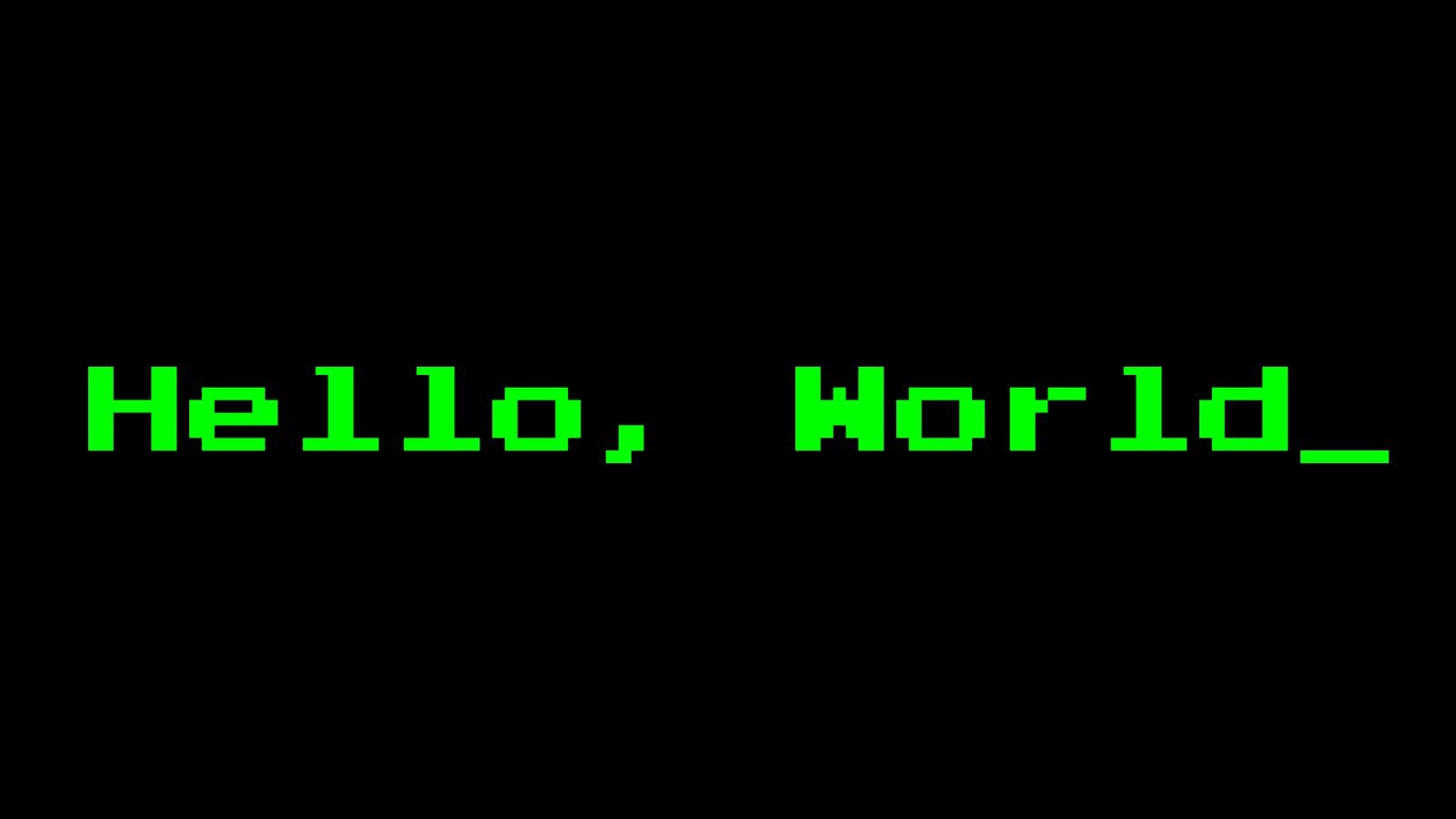The world we live in today has undergone a change because to the interesting science of programming. It is a special language with its own grammar and syntax that enables humans to converse with computers and develop amazing software, websites, and applications. Every programming language has the words “Hello World” at its core. We will examine the antecedents, import, and different uses of this catchphrase in this thorough guide. Join us on this adventure as we explore the “Hello World” realm, whether you’re a novice or an expert coder.
What does “Hello World” mean?
History and Origins
The words “Hello World” have been used since the beginning of computer programming. It is commonly accepted that The C Programming Language, a key programming book by Brian Kernighan and Dennis Ritchie that was released in 1978, is where it first appeared. “Hello, World!” was used as an example program by the writers of this book to explain the fundamental syntax and structure of the C programming language.
Significance in Programming
“Hello World” holds a special place in programming culture. It serves as a rite of passage for aspiring programmers, marking their first step into the world of code. By writing a “Hello World” program, beginners gain an understanding of how to create and execute a simple program, making it an essential foundation for further learning.
Common Variations and Translations
While the classic “Hello World” phrase remains the most common, variations and translations exist across different programming languages and cultures. For instance, in Python, the equivalent program would be written as:
print("Hello, World!")In Japanese, a common translation would be:
print("こんにちは、世界!")These variations showcase the flexibility and adaptability of the phrase within the global programming community.
2. Hello World in Different Programming Languages
As programming languages have evolved over time, “Hello World” programs have become a staple in learning and demonstrating the syntax and functionality of various languages. Let’s explore how “Hello World” is written in some popular programming languages:
Python
print("Hello, World!")Java
public class HelloWorld {
public static void main(String[] args) {
System.out.println("Hello, World!");
}
}C++
#include <iostream>
using namespace std;
int main() {
cout << "Hello, World!" << endl;
return 0;
}JavaScript
console.log("Hello, World!");Ruby
puts "Hello, World!"PHP
<?php
echo "Hello, World!";
?>Each programming language has its own syntax and conventions, but they all share the goal of displaying the “Hello World” message.
3. Why is “Hello World” Used as the First Program?
Simplicity and Ease of Understanding
The “Hello World” program is intentionally simple, consisting of only a few lines of code. This simplicity makes it accessible to beginners who are just starting their programming journey. By focusing on a basic output statement, new programmers can grasp the fundamental concepts without being overwhelmed.
Syntax and Structure Introduction
Writing a “Hello World” program introduces programmers to essential elements such as print statements, function declarations, or class structures, depending on the language used. This hands-on experience provides a practical understanding of the language’s syntax and structure.
Testing the Development Environment
Creating a “Hello World” program also serves as a quick test to ensure that the development environment is set up correctly. It confirms that the necessary compilers, interpreters, or runtime environments are installed and functioning correctly.
4. How to Write a “Hello World” Program
Now that we understand the importance of “Hello World,” let’s dive into how to write a “Hello World” program. Here’s a step-by-step guide:
- Choose a programming language: Select a programming language that you want to learn or work with.
- Set up the development environment: Install the necessary software and tools required for programming in your chosen language.
- Open a text editor or integrated development environment (IDE): Use a text editor or IDE to write your code.
- Write the “Hello World” code: Type the code specific to your chosen language, which outputs the “Hello World” message.
- Save the file: Save the code file with an appropriate file extension.
- Compile or run the program: Compile the code or run it directly, depending on the language you’re using.
- Observe the output: Check the output console or terminal for the “Hello, World!” message.
Repeat these steps for different programming languages to explore their unique syntax and behaviors.
5. “Hello World” and Beginner-Friendly Programming Languages
As programming has become more accessible to people of all ages, beginner-friendly programming languages and platforms have emerged. These languages aim to simplify the learning curve and introduce programming concepts in a fun and interactive manner. Here are some examples:
Scratch
Scratch is a visual programming language designed for children and beginners. It uses a block-based interface where users can drag and drop code blocks to create programs. In Scratch, creating a “Hello World” project involves connecting the say block to the text “Hello, World!”.
Blockly
Blockly is a web-based visual programming editor developed by Google. It provides a simple and intuitive interface for creating programs by arranging blocks of code. With Blockly, beginners can easily construct a “Hello World” program by connecting the text_print block to the string “Hello, World!”.
Python for Kids
Python is known for its readability and simplicity, making it an excellent language for beginners. There are several resources available, such as the book “Python for Kids“, which introduces programming concepts through engaging projects. The book guides young learners through creating their own “Hello World” program using Python.
JavaScript for Kids
JavaScript, the language of the web, is also beginner-friendly. Resources like the book “JavaScript for Kids” teach programming principles using JavaScript. Kids can follow along and create their first “Hello World” program by using console.log to print the message to the browser console.
These beginner-friendly languages and platforms provide an excellent starting point for aspiring programmers, nurturing their curiosity and creativity while introducing them to the world of coding.
6. “Hello World” Beyond the Console
While “Hello World” programs traditionally display a message in the console, the phrase has expanded to other areas of programming. Let’s explore how “Hello World” extends beyond the console:
Web Development
In web development, “Hello World” often manifests as a simple webpage that displays the message. HTML and CSS are used to structure and style the page, while JavaScript can add interactivity. Hosting providers often include default “Hello World” web pages as a starting point for beginners.
Mobile App Development
For mobile app development, “Hello World” can be the initial screen displayed when the app is launched. Developers use frameworks like React Native or Flutter to build multi-platform apps that greet users with a welcoming message.
Internet of Things (IoT)
In the realm of IoT, “Hello World” takes the form of small devices and sensors that transmit data to the cloud. These devices are programmed to send a “Hello World” message as a confirmation of successful connection and functionality.
Robotics
In robotics, “Hello World” can be the introductory code that makes a robot move, make sounds, or perform basic actions. Robotic programming frameworks like ROS (Robot Operating System) often include sample “Hello World” programs to help beginners get started with robotics.
By exploring these avenues, programmers can see the versatility and adaptability of “Hello World” in various domains beyond the console.
7. FAQs about “Hello World”
Let’s address some frequently asked questions about “Hello World” in programming:
- Q: Why is “Hello World” used instead of another phrase?
- A: “Hello World” is a simple, universally understood message that demonstrates basic program functionality without distractions.
- Q: Who created the first “Hello World” program?
- A: While the exact origin is uncertain, Brian Kernighan and Dennis Ritchie popularized the use of “Hello World” in their book The C Programming Language.
- Q: Can “Hello World” programs be more complex?
- A: Yes, “Hello World” programs can be expanded to include additional features and functionality, showcasing more advanced programming concepts.
- Q: Is “Hello World” necessary in every programming language?
- A: While not mandatory, “Hello World” is a common practice and often serves as a starting point for learning any programming language.
- Q: Are there any alternative phrases to “Hello World”?
- A: Yes, some programming languages and communities have adopted alternative phrases like “Greetings, Earthlings!” or “Aloha, World!” for variety and fun.
- Q: How can I customize my “Hello World” program?
- A: You can personalize your “Hello World” program by adding your name, changing the message, or incorporating additional functionality based on your creativity and programming knowledge.
Feel free to experiment and modify the “Hello World” program to suit your preferences and learning objectives.
8. Conclusion
In conclusion, “Hello World” holds a special place in the world of programming. It symbolizes the first step into the realm of coding, introducing beginners to syntax, structure, and the art of communicating with computers. From its humble origins to its diverse applications across programming languages and domains, “Hello World” remains a universal phrase that transcends cultures and borders. So, as you embark on your programming journey, remember to embrace the simplicity and significance of “Hello World” and let it be the gateway to your coding adventures.



